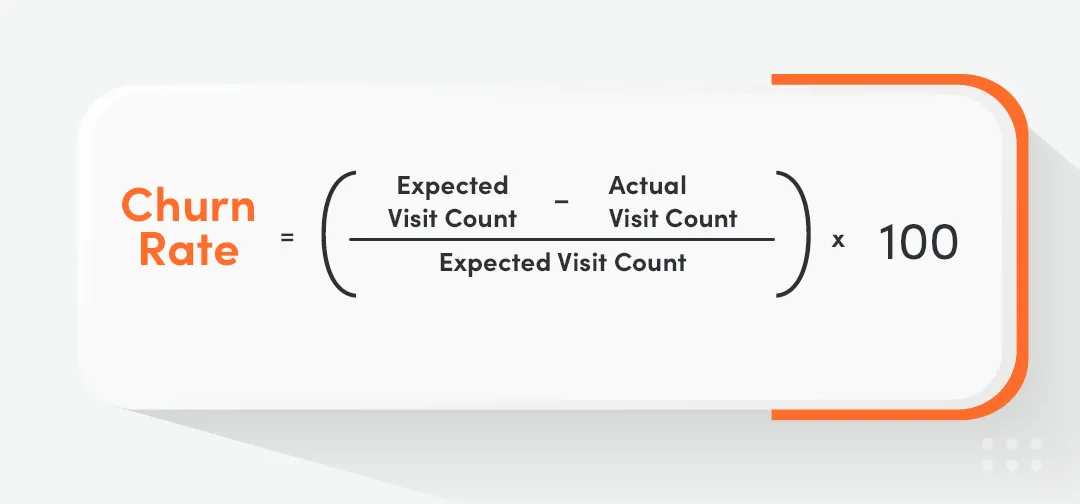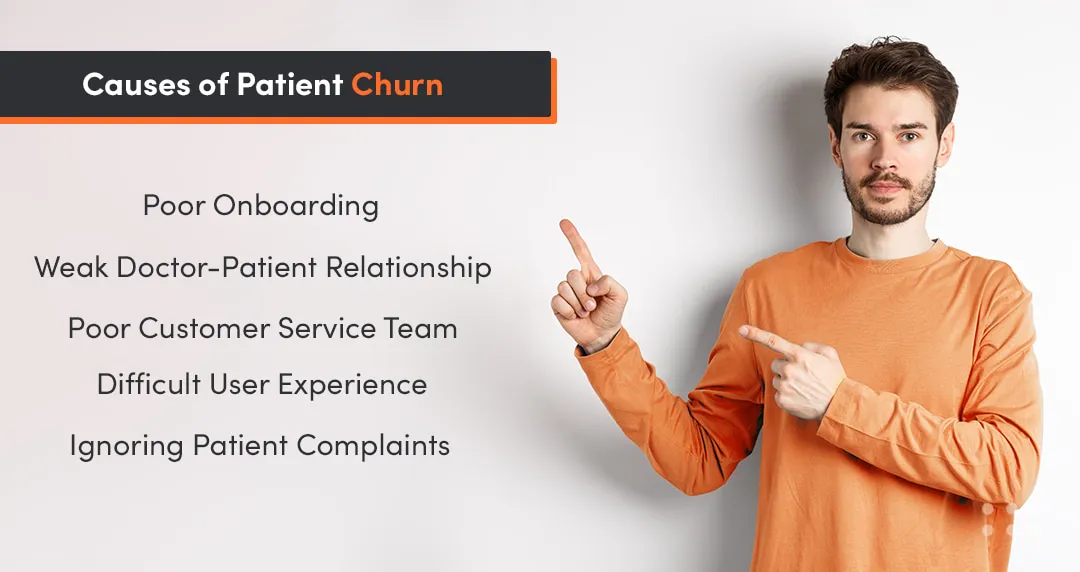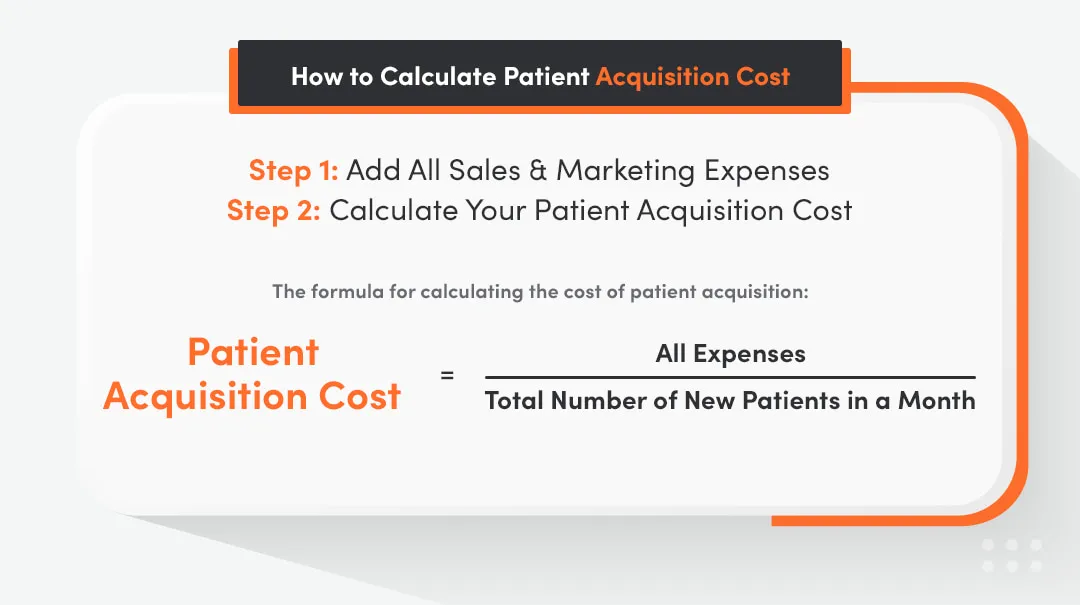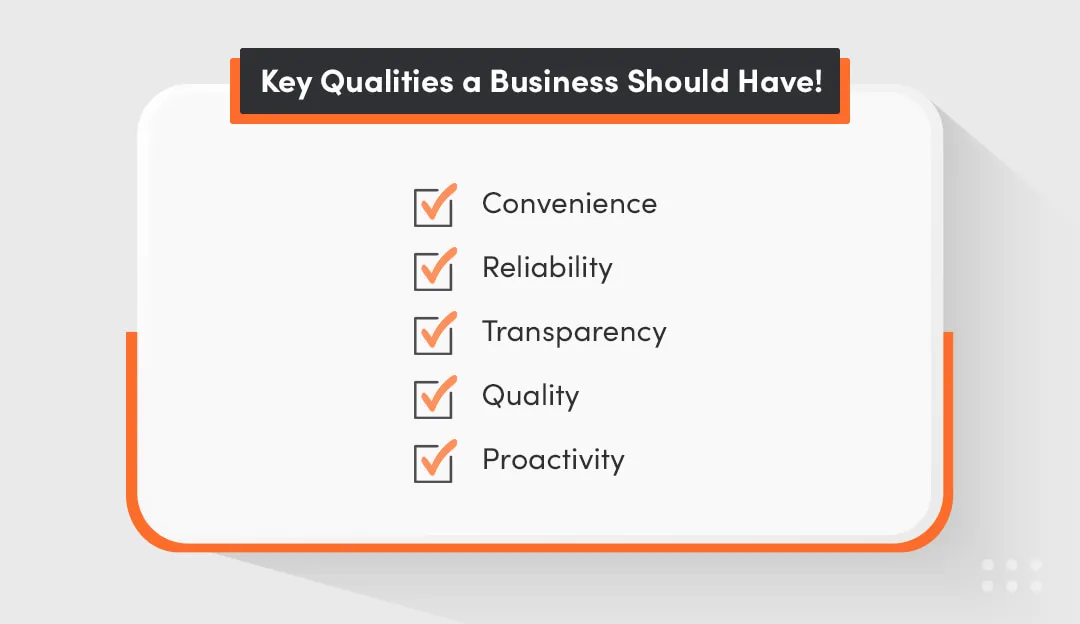According to HubSpot's 2022 State of Marketing Report, marketers are putting more effort into boosting customer acquisition and loyalty. According to industry research, an increase in customer acquisition of 5% could increase earnings by 25% to 95%.
A subscription-based software has a relatively high Customer Acquisition Cost (CAC). To break even, a customer's lifetime value with the business should be at least six months. Therefore, if the rate of customer turnover rises month over month, it can negatively influence a company's ability to grow.
The average healthcare entity has a growth rate of 45% but a churn rate of 48%. Various factors cause the churn rate to increase in the healthcare industry, including lack of communication, poor customer experience, and overall dissatisfaction with the treatment.
The majority of new businesses don't have a good understanding of how to improve customer acquisition and reduce churn. Therefore, instead of putting more time and effort into bringing in new customers, attempt first to develop and implement practical tactics that may help pinpoint the precise causes and lower customer churn to ensure that no customers leave in the future for the same reasons. By doing this, a business will increase customer trust and confidence and the brand's reputation.
In this article, you will learn:
- What causes patient churn?
- What is the successful customer acquisition strategy?
- Strategies for customer acquisition
- Customer acquisition vs. lead generation
- How to calculate and reduce patient acquisition cost
- How to create a customer acquisition plan
- What key qualities should businesses have to engage consumers successfully in Healthcare platforms?
What Causes Patient Churn?
Before determining the primary factors contributing to patient churn, it is crucial to know the differences between patient and customer churn:
Patient Churn
Patient turnover is a problem for many providers, including doctors, dentists, and pharmacists. The percentage of patients leaving your treatment is known as patient churn. The following equation can be used to calculate it:
Churn Rate = Expected Visit Count – Actual Visit Count/Expected Visit Count x 100

It's all about comparing your previous data-driven expectations to the number of patients you treat.
Customer Churn
Customer Churn is the percentage of a company's total customers who churn and frequently refers to service subscribers canceling their memberships. In layman's terms, customer churn may be applied to pharmaceutical companies with customers such as physicians, hospitals, and clinics.
Causes of Patient Churn
Patient loss can occur due to a variety of factors. Some of them are beyond your control. People migrate, discover cures, and lose their insurance. Here are some of the important factors to think about:

Poor Onboarding
If customers do not find items, services, or software helpful, it might be because they cannot identify or understand functionalities. This is primarily due to inadequate onboarding, in which a health practitioner does not adequately teach new patients how to utilize products and services.
An effective customer onboarding procedure is critical for ensuring customer satisfaction. Exceeding patients' expectations will keep them loyal for a long time period.
According to Harvard Business Review, concentrating on onboarding offerings greatly influences revenue, contract renewals, and customer referrals over the contract's life.
Weak Doctor-Patient Relationship
Engaging patients and maintaining strong connections should be a constant activity. It's certainly not a one-time event. You must proactively approach and listen to their voices to make patients feel valued. Interact with them in every manner possible and through channels like phone calls, WhatsApp chat, etc.
Poor Customer Service Team
Poor customer support service has the potential to drive away customers. They are valuable assets to a healthcare business - do not overlook them.
If you provide exceptional healthcare products and services but don't prioritize customer service, it will cost a lot of money in the long term. To avoid these problems, one must provide timely and attentive customer support service.
Difficult User Experience
Many healthcare businesses realize over time that customers download and install applications but then abandon them. It might be because they are unaware of how to use it or because the product features are too difficult to comprehend. No matter how many customer acquisition efforts are put in to retain customers, they will still leave due to complex user experience.
When building any application, remember that outstanding user experience design is the foundation of every program and the main ingredient for a successful customer acquisition strategy.
Ignoring Patient Complaints
Failure to reply and inadequate treatment of their issues aggravate consumers the most. If patients complain about the same problems, lack of attention irritates them and leads to churn.
Finding the flaws in goods and services depends heavily on complaints. Consider patients' problems as a reality check for your business.
Alen Weiss stated in his book Million Dollar Consulting, ask your customers to be part of the solution, and don't view them as part of the problem.
What are the 8 Best Strategies for Churn Reduction?
Considering a list of reasons for causing the churn rate to increase, here are the 8 best strategies to help reduce patient churn.
1 - Analyze Why Churn Occurs
If a health practitioner waits until a customer leaves, it will be too late to take action. Rather, they should use data to develop methods to proactively identify and fulfill customer needs.
Churn is a part of any business, and it will occur regardless of how much work one dedicates to relationships with customers.
The better practice is to forecast the key signals that cause the churn. Identify the causes of patients' unhappiness and dissatisfaction. Work on these causes to mend your relationship with patients before they churn.
2 - Know Who is at Risk of Churning
Isn't it true that the greatest approach to avoid churn is simply to prevent it in the first place? A subset of customers is always more likely to depart than others. Therefore, it's in the greatest interests to be aware of who is on the verge of leaving. In this manner, you may reach out to them in time to resolve their issue or concern and restore your relationship with them.
3 - Provide Excellent Healthcare Service
Delivering first-rate customer service is a terrific approach to lower churn. Customers are less inclined to go elsewhere if they are pleased with customer service.
A customer representative should be free to provide exceptional customer service. This entails giving them access to the resources (tools, data, and consumer insights) that will enable them to foresee customer demands or act fast to get the data required to address an issue.
4 - Combine Automation with a Human Touch
Humanistic automation is a method of combining automation and the human touch. Customers will not feel appreciated if the conversations are robotic.
Let's take an example of an automated chatbot. It can be personalized with dedicated human support for working hours. Phone automation services are also available to direct calls to doctors in emergencies. Striking a good balance will help stay up with new business while also providing clients with the personalized service they require to keep renewing.
5 - Improve the Renewal Process
A patient won’t consider renewing their agreement if the renewal procedure is difficult. A healthcare business must ensure that it communicates effectively with the consumers and that their issues are heard if they have any. Customers should be informed of contract modifications in advance.
6 - Improve the Onboarding Process
Ensure that the onboarding process is simple so that customers understand the product and know how to contact them if they want assistance.
To reduce churn, you must improve the onboarding process and communicate properly with users as they move through the marketing funnel. Customers are significantly more likely to stay with a business if they know how to get the most out of the product, service, or app.
7 - Increase Customer Engagement
Remember that a patient loves to continue with the business that prioritizes them. You can increase customer engagement and develop long-lasting relationships by putting the right marketing funnel in place and strongly emphasizing customer satisfaction and customer lifetime value.
Product-led content, blogs, newsletters, and videos showcasing goods or services are a few strategies to boost client engagement. Additionally, you can organize webinars or Q&A sessions and post material on social networking websites.
8 - Make the Right Tools Available to Team
Sales and marketing teams once used spreadsheets or dashboard tools to report on churn and customer acquisition costs, but this only gave them a perspective into the past and what had already occurred.
These days, it is possible to use technologies to assess customer behavior and churn patterns, identify customers more likely to leave their current provider, and even find up-selling and cross-selling possibilities.
Some of the best examples of these software solutions are Akkio, Churnly, Qualtrics XM, Fayrix, and Segment.
Try our developers.
Free for 2 weeks.
No risk. Just results. Get a feel for our process, speed, and quality — work with our developers for a trial sprint and see why global companies choose Selleo.
Best Strategies for Customer Acquisition

Healthcare businesses spend a good amount of money and time on marketing efforts. These marketing efforts can help medical professionals to increase the intake of new customers and reduce customer acquisition costs.
Create a Solid Online Presence
A hospital's or organization's fundamental information, such as specializations, treatment choices, physicians, and facilities, can be found on a highly regarded website. To provide a seamless experience, improve the navigation, design, and content. It's important to keep in mind that it should just take a few clicks for potential customers to discover the information via organic search.
Pay-Per-Click (PPC)
The cost of paid ads surpassed traditional TV advertisements in 2021 for the first time in the healthcare industry. Compared to traditional marketing methods, monitoring and measuring ROI is simpler for PPC.
In the world of PPC, Google leads the way with 85.53% of the market share. In the UK alone, Google has a market share of 93.69%. In Q3 2022, they brought in $54.48 billion from their advertising platform, and it's showing no signs of slowing down.
PPC is a successful digital marketing tactic because it enables businesses to target potential customers and monitor the performance of advertisements in real time. There are several ways to use PPC:
Google Ads: The advertisement may be displayed at the top or bottom of the Google search results page when a user types in one of the targeted keywords.
Advertising on social media: Paid advertisements are available on several social media channels, including Facebook, Instagram, and LinkedIn.
Display advertising: To reach potential customers, you can also utilize PPC to show advertisements on applications and websites devoted to fitness and wellness.
Online Reputation Management
Simply asking patients for feedback is one of the simplest methods to enhance online presence. Email or in-person inquiries can be used to do this. It requires great customer acquisition efforts to build trust among the target audience.
Patient satisfaction surveys are one approach to getting patient input. These polls may be taken online, via phone, or in person. Patients should be asked to score their overall satisfaction with the treatment they received and to remark on particular components, such as staff communication, wait times, and facility cleanliness.
Optimization for Search Engines
According to research, organic search generates three times more website visitors than any other marketing platform. Optimize the hospital's or organization's website for keywords associated with services or treatments to rank high on different search engines. This will enhance visibility and reputation and draw potential customers to the website.
Leverage Content Marketing
Content about the hospital, organization, or application to educate people on its usage, problem-solving capabilities, diagnosis of diseases, etc., can develop trust among patients.
There are several ways you can leverage content marketing:
- Publishing blogs on the website on educational, trending, and how-to topics.
- Sharing educational and informational content on social media profiles.
- Publishing eBooks and white papers can be valuable for healthcare professionals and people wanting to learn more about a certain disease or therapy
Install Chatbots
According to research, the US market for healthcare chatbots will expand enormously by 2025.
To handle phone calls around the clock, businesses can employ a chatbot to address new patients' most common queries.
It is also an excellent tool for gathering patient information, guiding them through the website, and scheduling appointments.
Chatbots not only address the demands of patients, but they can also greatly increase the efficiency of overall operations.
Experiment with Influencer Marketing
Influencers are becoming more trusted than close companions in today's society. Patients often share their healthcare journeys on social media channels because their healthcare journeys are intimate and emotional. It enables individuals to communicate with others who have had similar experiences, establish contacts with them, and learn about the illness and potential therapies.
Of course, you must be more vigilant and ensure the influencer abides by legal requirements and doesn't provide direct medical advice. The best course of action is to only collaborate with reliable influencers who will follow legally and morally established guidelines.
Leverage Phone Calls for Booking More Appointments
88% of patients prefer to schedule their healthcare appointments over call. Online research patients choose to speak with a real person before scheduling appointments.
Invest in a hosted PBX with IVR (interactive voice menu) to circumvent the 24/7 availability issues. It gives patients the information they need to make an appointment. A computerized receptionist can take bookings around the clock without human intervention.
Use the Power of Automation
Marketing automation can be a game changer for healthcare businesses. There are several types of automation for different customer acquisition channels:
- Creating templates for communication: Ready-to-use designs can help save time and minimize response time. Depending upon the feedback and reactions received, you can always continue to improve.
- Automate inquiry distribution: When marketing strategies begin to produce results, you will receive many queries. It is critical to address them in real time to achieve the greatest outcomes. Reduce turnaround time and enhance conversions by automating the lead distribution process depending on the team's roster.
- Automate report generation: Using intelligent technologies to produce easy-to-read reports can save significant time and effort.
Track and Analyze your Marketing Campaigns Regularly
Data-driven marketing is most successful when used in healthcare. The two requirements for improvement are identifying what is effective and assigning responsibility for both success and failure.
Investing in analytical tools like Google Analytics and Google Search Console is a good place to start. But, to take customer acquisition strategy to the next level, you only need a complete marketing automation platform.
Customer Acquisition vs. Lead Generation
Whether a healthcare company chooses customer acquisition or lead generation depends on the business development plan. But the important point to understand is the bottlenecks. Identify where the bottlenecks are. Is there a problem in getting new customers? or is there a problem in converting leads into customers?
What is Lead Generation?
Lead generation aims to attract the target market's attention and get them to the top of the sales funnel.
Suppose a business has raw leads after getting visitors' attention. Although they may not necessarily be potential customers, they have shown some interest in the company or product.
What is Customer Acquisition?
Customer acquisition is getting potential customers to buy products or services. A strong customer acquisition strategy comprises three steps:
Customer Acquisition vs. Lead Generation: Which Should You Optimize For?
When analyzing which processes to optimize, the distinction between acquiring customers and lead generation becomes clearer. Many businesses choose to prioritize lead generation first.
Suppose a business solely focuses on lead generation when optimizing processes. In that case, it may attract many prospective customers, but they may not be the best, and many may not qualify as Sales-Qualified-Leads (SQLs).
A lead is not motivated to progress through the buyer's journey and won't ever become a customer, even if you generate more leads. This is because you aren't concentrating on the marketing funnel or flywheel after the first attraction stage.
Customer acquisition refers to generating more leads by attracting them and then continuing to engage those leads to convert them into paying customers with continuous and meaningful engagement.
To summarize, if a healthcare business generates quality leads, it should focus on converting them using customer acquisition tactics. However, if a healthcare business fails to gather quality leads, it should first consider lead generation methods to attract targeted quality leads.
How to Calculate and Reduce Patient Acquisition Cost
Although it may appear a bit unclear initially, the cost of obtaining a new patient is rather simple. Here's the formula to calculate patient acquisition costs.
*Note: To better understand how to calculate the Patient Acquisition Cost and ROI, let's take an example of a hypothetical Clinic. All the numbers presented in the calculation are simple assumptions to make the calculation process understandable.

Step # 1: Add All Sales & Marketing Expenses
Add all the expenses amount that have been utilized on patient acquisition. These expenses may include the following:
- Referral Fees = $750
- Marketing Employees Salaries = $4025
- Budget for Creating Marketing Material = $575
- Cost of conducting marketing activities and events = $1050
- Cost of designing and managing a website = $2600
- Cost of advertisements + cost of online reviews and referrals = $1000
After adding all the expenses the hypothetical cost of expenditure is $10000 for a month.
Step # 2: Calculate Your Patient Acquisition Cost
Once you have the marketing cost, divide it by the number of new patients and you will get your Patient Acquisition Cost.
The formula for calculating the cost of patient acquisition is as follows:
Patient acquisition cost = All expenses / total number of new patients in a month
It is a good sign if the CPA is lower than the Patient's LTV. The patient acquisition cost should always be lower (preferably much lower) than the Patient LTV, as it is in this practice.
How to Calculate Patient Lifetime Value
Next, figure out the patient's lifetime value (Patient LTV). This figure estimates the income each new patient's relationship will bring over time.
These figures are estimated values derived from previous patient records. Let's take an example of a hypothetical clinic:
In the last five years of the clinic operations, 30% of new patients choose surgery, costing an average of $5,000 for each procedure, and four office visits, costing an average of $500 each.
80% of newly gained patients paid $500 for two visits to the office.
To calculate the Patient LTV for this clinic, you would complete the following calculation:
((30 x $5,000) + (30 x 4 x $500) + (80 x 2 x $500)) / 100 = $2,900.
On average, each new patient paid $2,900 during their relationship with this clinic.
Find Your Monthly Revenue
With the Patient LTV, you can use it to calculate the monthly income contributed by your new patients.
Take the example of the same Orthopaedics clinic where every new patient has paid $2,900 on average. If the clinic acquires 35 patients in a month, it means the monthly income of the clinic is $2900 X 35 = $101,500
Determine Your ROI
Finally, calculate the return on investment (ROI) for patient acquisition by deducting the entire cost from the revenue and dividing it by the costs.
For example, if the clinic's monthly revenue was $101,500 and assumed the cost of all expenses was $10000, then:
($101500 - $10000) / $10000 = 9.15
When multiplied by 100%, this practice has a good ROI on patient acquisition of 9.15%
How Do You Reduce Patient Acquisition Costs?
Consider the possibility that after determining patient acquisition costs, you discover that the business is investing much more in gaining each new patient than they are likely to provide in revenue (Patient LTV). In such a situation, you'll need to look into customer acquisition strategy for lowering patient acquisition costs to increase ROI and turn the business into a more profitable one.
Automated software is one of the finest methods to reduce customer acquisition costs. Staffing costs, including those for the marketing department, referral management personnel, scheduling personnel, and others, are substantial costs for patient acquisition.
Automation boosts online presence by enticing customers to post reviews, which brings in more customers at a reduced cost. To ensure that every reference you pay for results in an appointment at your office, you can invest in referral management software to limit referral leakage.
Data collection on "How did you hear about us?" during the new patient intake process is another successful method of lowering patient acquisition expenses. With the aid of customer data, you can choose which customer acquisition channels to spend less on and which are effective.
How to Create a Customer Acquisition Strategy
How do I create a customer acquisition strategy? Here are the steps a healthcare business will need to take to plan and execute a strong customer acquisition strategy:
Identify Your Customer Avatar
When developing a customer acquisition strategy. Every business should establish a customer avatar, a buyer persona. This is the ideal customer base: who they are, what they appreciate, their difficulties, and demographic information. It will be the first step in selecting customer acquisition channels.
Determine Goals
After creating a customer avatar, make a list of business aims and objectives. What are you hoping to accomplish with your attempts to acquire new customers? Here are a few examples:
- Awareness: Are you attempting to raise awareness about a subject, shine a light on something, or make yourself known to new customers?
- In-person: Is it necessary for the company's customers to visit a physical location?
- Phone call: You may need to convert the web traffic into a phone inquiry.
- Form: Is the traffic still learning about you in its early stages? If so, you might only want them to fill out a form.
- Conversion: If the visitors attempting to reach you already know who you are, you may just be attempting to convert them into a sale.
- Setting your goals is essential. It will be simpler to deliver the right message and persuade your audience to act as you want them to if your customer acquisition strategy is clearer.
Choose a Platform
You need to decide which customer acquisition strategy to employ to reach the new customers once you've identified who they are and what you want them to accomplish. Both online and offline, there are numerous ways to attract new customers.
Set an Acquisition Budget
To succeed, you must have a budget and a method for calculating new customer acquisition costs. If you don't have a defined budget ahead of time, marketing might rapidly become more expensive than you anticipated. Begin with a minimal budget and gradually increase it as you gain success.
Optimize and Tweak
Once you've had an opportunity to gather information on how the target audience is receiving adverts, pieces of relevant content, and other relevant data, you can optimize and make any adjustments. For example, allocate more ad spend to a certain demographic and reduce spending on those who aren't converting.
What Key Qualities Should Businesses Have to Engage Consumers Successfully in Healthcare Platforms?
The best customer acquisition strategy in healthcare is to match products and services to consumer expectations. For example, the simplicity and personalization needed to provide the value-based care that customers desire may be provided via a telemarketing platform.

The majority of new customers look for the following characteristics in the healthcare services they select:
Convenience — Consumers want a consistent healthcare experience across several platforms. They also want easy access to care at the press of a button.
Reliability — Patients today demand advances in healthcare service quality as they have evolved into consumers. You can gain their confidence by interacting with them in real time and providing prompt customer service.
Transparency — Healthcare customers want clarity in communication. For example, before making any decisions, they want to know how much treatments will cost.
Quality — Healthcare customers value care quality and they want more proactive service delivery, a personalized approach, and positive results in treatment.
Proactivity — Two-way communication is more appealing to consumers. They want assistance not just during visits but also before and after them. Thus, healthcare practitioners can be proactive in offering continuous treatment that considers a patient's location, socioeconomic status, and medical history.
Summary
Churn is an important metric directly related to revenue and gives clear statistical data about retained customers. Businesses must understand the issues that lead to churn and implement customer acquisition strategies to fix them. Remember, you need to resolve churn before it becomes a huge problem.
Controlling churn is part of the bigger business strategy, but as a healthcare provider, you can not rely only on an existing customer base. To acquire new customers, a healthcare business needs to understand the customer acquisition cost concept and implement acquisition marketing tactics to increase new customers.





